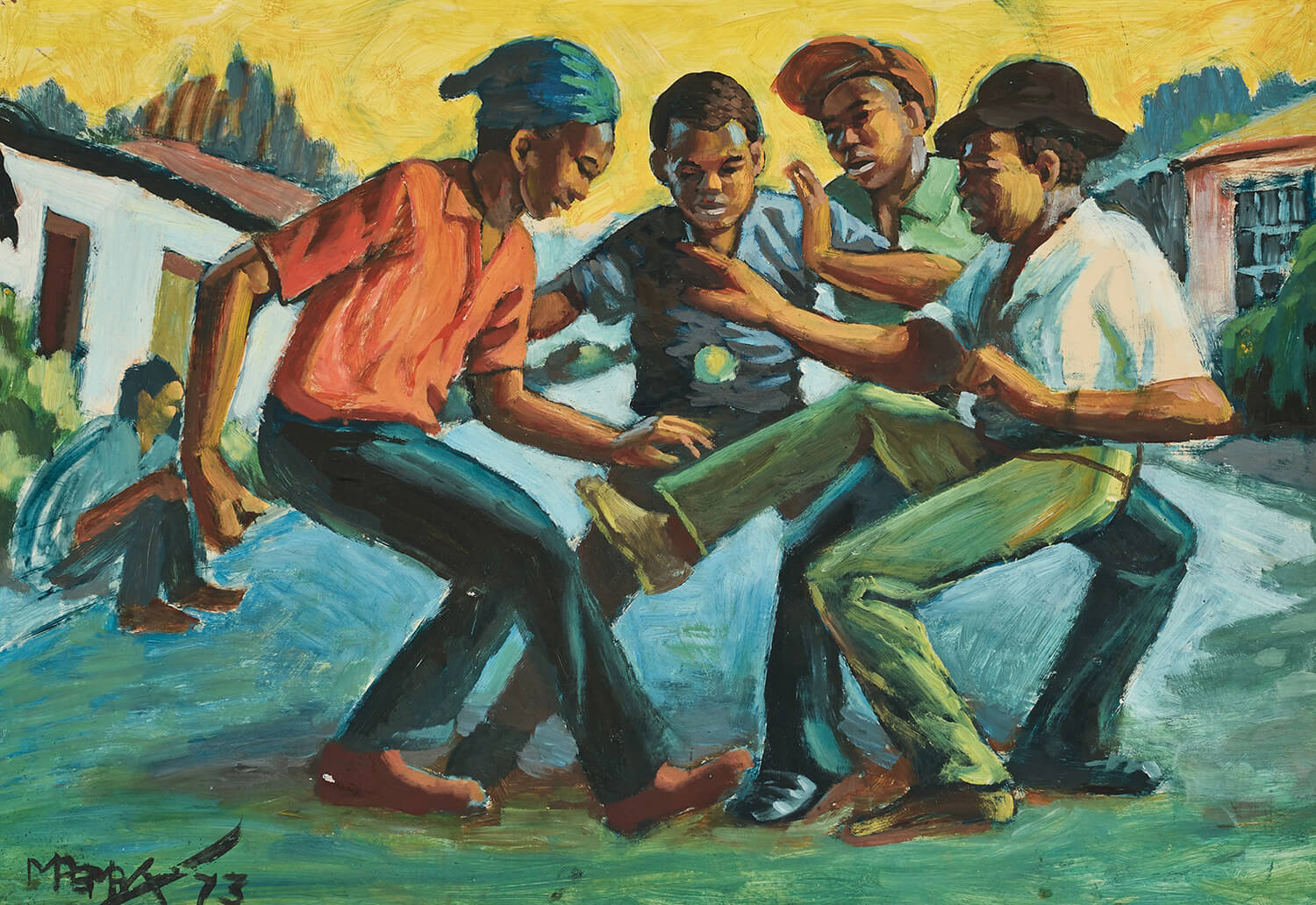Suzette Bell-Roberts, co-founder and publisher of ART AFRICA presents her top picks for the online edition of ART X Lagos. ART X Lagos is West Africa’s premier international art fair, designed to showcase the best and most innovative contemporary and modern art from the African continent and its Diaspora.
 Bob-Nosa Uwagboe, Boy in Detention, 2020. Acrylic and spray paint on textured canvas, 150 x 107cm. Courtesy of OOA Gallery.
Bob-Nosa Uwagboe, Boy in Detention, 2020. Acrylic and spray paint on textured canvas, 150 x 107cm. Courtesy of OOA Gallery.
Bob-Nosa Uwagboe is known for his satire-like works as a means of documenting the inhumanity that threatens our human existence – from his criticism of the political class to those that examine the degeneration of society. His work offers unsparing condemnation of the inhumanity of social and political systems that render people victims. His collaged paintings, sometimes featuring found material, run the gamut from abstract to representational, and are distinguished by intense primary colours applied in large expressive strokes. Surfaces are scratched with written texts and aerosol paint is roughly sprayed over and across painted forms.
 Wole Lagunju, Contemplating Ori, 2020. Oil on canvas,160 x 114.3cm. Courtesy of Ed Cross Fine Art.
Wole Lagunju, Contemplating Ori, 2020. Oil on canvas,160 x 114.3cm. Courtesy of Ed Cross Fine Art.
Wole Lagunju’s work draws on his childhood experiences in Oshogbo and professional life in urban Lagos, Lagunju’s work is also associated with Onaism, a contemporary art movement of the Ife Art School dedicated to reimagining the forms and philosophies of traditional Yoruba art and design. His paintings and installations featuring the Yoruba adire fabric interrogate and explore themes regarding the changing nature of the traditional African market, a change that is primarily initiated by contemporary globalization while his recent series which draw upon images of Gelede masks and the Victorian era critique the racial and social hierarchies of the 19th century.
 François-Xavier Gbré, Eko Atlantique#10, Lagos, Nigeria, 2014. Pigment print on fine art paper, 102 x 136cm, edition of 5+2 AP 1/5. Courtesy of Galerie Cécile Fakhoury.
François-Xavier Gbré, Eko Atlantique#10, Lagos, Nigeria, 2014. Pigment print on fine art paper, 102 x 136cm, edition of 5+2 AP 1/5. Courtesy of Galerie Cécile Fakhoury.
François-Xavier Gbré lives and works in France and Côte d’Ivoire. While engaging with time and geography, Gbré’s work invokes the language of architecture as a witness to memory and social change. From colonial remnants to landscapes reshaped by current events, he explores territories and revisits history. The artist’s ongoing dialogue with his surrounding environment is rendered in meticulous installations that are veritable investigations of territory, and by in-situ presentations that make photography felt through a physical relationship to the audience.
 Claudie Poinsard, Fil de Chaise au Petit Doight, 2020. Mixed media on canvas, 146 x 114cm. Courtesy of Galerie Mam.
Claudie Poinsard, Fil de Chaise au Petit Doight, 2020. Mixed media on canvas, 146 x 114cm. Courtesy of Galerie Mam.
In her artistic approach, Claudie Poinsard represents human bodies to the limits of their representation. Her main aspiration is to deconstruct the body shape, its reflection in the mirror to only live its vacuity. The body image, blended or figurative is lost in the matter and emphasized by the lines, therefore fragmenting the arbitrary nature of its envelope. The themes in her works are grasping the notion of modern humanity. She questions identity, the culture of consumerism, which is wasteful, the worship of beauty, and loneliness.
 Chike Obeagu, The Witness, 2020. Mixed media collage, 214.3 x 170.2cm. Courtesy of Kó.
Chike Obeagu, The Witness, 2020. Mixed media collage, 214.3 x 170.2cm. Courtesy of Kó.
Chike Obeagu’s expressive mixed-media paintings explore social experiences of the everyday in Abuja, Nigeria, where he lives. Working with bright colours interspersed with cool colours, he captures the bustling energy of city life, people, animals, and co-constitutive elements of the urban environment, such as cars, motorcycles, and shopping malls. Obeagu’s photo-collage technique allows him to introduce textual elements that convey some of the recent events in Nigeria, such as electioneering campaigns and the recent Ebola outbreak. In this way, the painting is both a work of art and a visual record of the social milieu in Nigeria at a particular juncture.
 Rufai Zakuri, Love Glasses, 2020. Mixed media, 66 x 56cm. Courtesy of Nubuke Foundation.
Rufai Zakuri, Love Glasses, 2020. Mixed media, 66 x 56cm. Courtesy of Nubuke Foundation.
Rufai Zakuri fuses plastic scraps, trims and other mediums into form as he would do a painting, and stitches them using a rope and needle. By transforming the found object in art, Rufai seeks to transform the lives of the women as well, revealing the beauty and vibrancy within while examining consumerism, environmental pollution, labour, trade, and the perils of industrialization in contemporary Ghanaian society.
 Olumide Onadipe, Crossroad 2, 2020. Mixed media. 188 x 153cm. Courtesy of SMO Contemporary Art.
Olumide Onadipe, Crossroad 2, 2020. Mixed media. 188 x 153cm. Courtesy of SMO Contemporary Art.
Olumide Onadipe’s art stems from anger at the way things are. He uses it to address the problems of Nigeria, Africa, and the rest of the world. He makes social commentary using his sculptures and painted canvases, creating arresting narratives with intellectual depth, artistic dexterity, diversity, freedom, and a bold palette.
Visit ART X Lagos: https://artxlagos.com/



